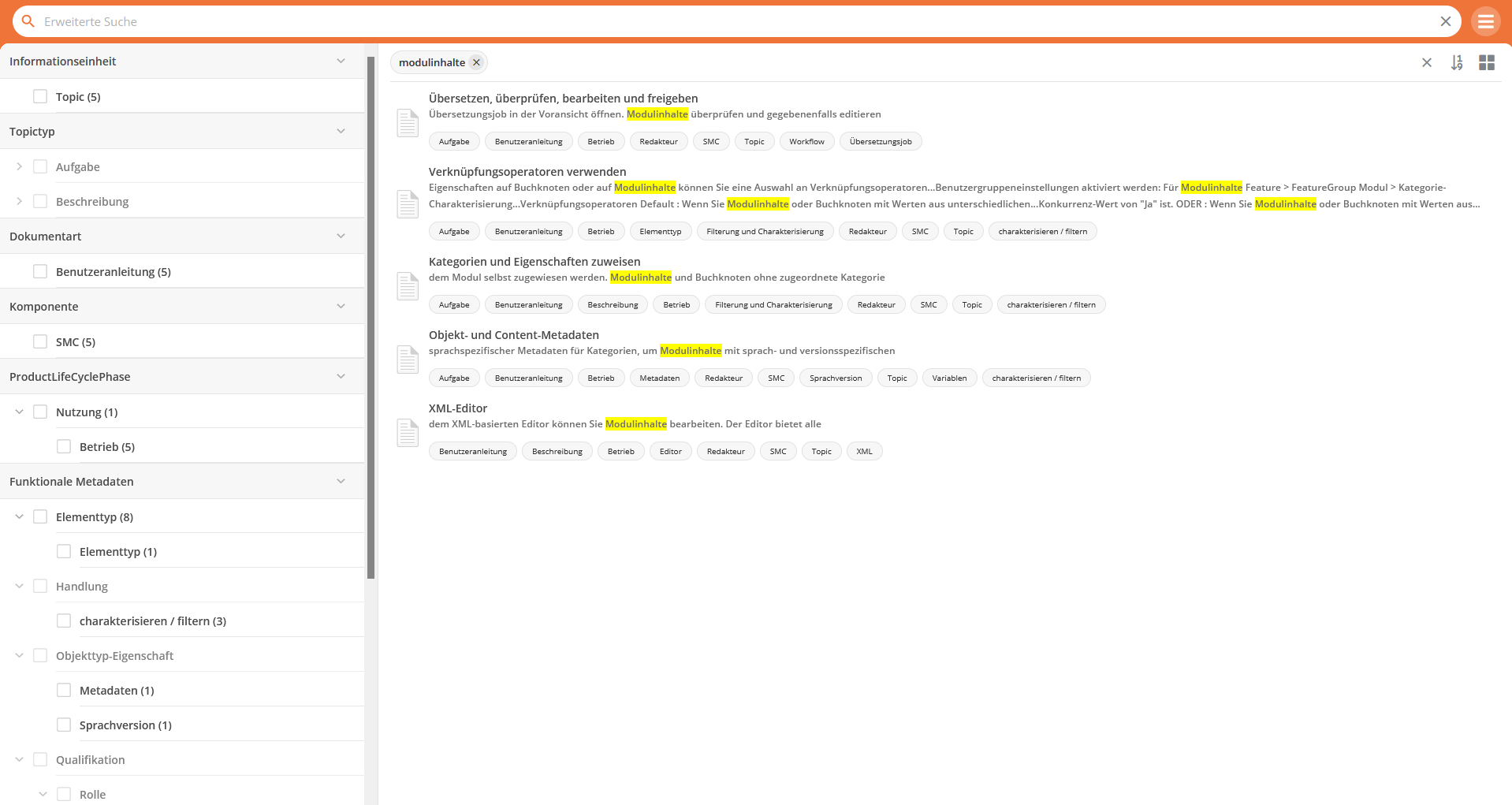Powerful search: fast and intelligent
Metadata model and classification
JAMES uses an intuitive approach to searching. Entering a search term triggers multiple options simultaneously:
- Automatic suggestions for words found in the content
- Automatic suggestions for specific property values (e.g., product numbers)
- Filtering of the faceted search structure
While typing in the search field, JAMES suggests the complete search term after only a few characters - both from the full text search and from the search classes.
Alternatively or additionally the way via the faceted search is possible. Facets can be:
- Names of search classes
- Defined object property values
- Numeric ranges (from - to)
- Date ranges (from - to)
Active search criteria appear in a clear display as tags, which can also be removed from the search individually.
Faceted search
A hierarchically structured classification can be used as a facetted structure. This means that only those entries are displayed behind which search hits are hidden. The number of expected hits is also displayed.
When an entry is selected, the complete search structure is immediately adapted dynamically to update the remaining hits.
The search results can be further narrowed down by class-specific properties. These search criteria are displayed in the search structure as children of the corresponding search classes.








